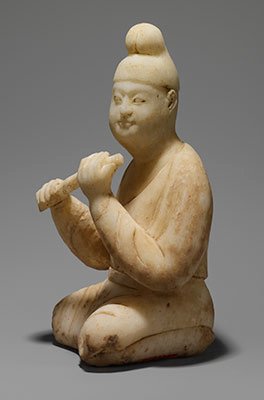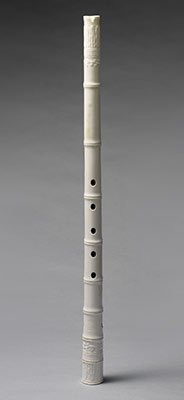Music and Art of China


China gives a portion of the most punctual hints of music making. These are for the most part as all around saved melodic instruments, the unmistakable proof of music. More than a few centuries, melodic instruments from territorial indigenous conventions and additionally from India and Central and West Asia were absorbed into the standard of Chinese music. Probably the most antiquated instruments have been held, changed, or restored all through the ages, and many are in like manner utilize even today, vouching as a profession heritage of a tough workmanship. This heritage is as often as possible celebrated in the visual specialties of China, recording ceremonies and festivities, or as materialistic trifles of those whose lives were improved by the reverberate hints of instruments produced using conceal, mud, metal, stone, gourd, wood, silk, and bamboo.
Archeological Evidence of Musical Instruments
Eight thousand years prior, individuals in focal China enchanted to the vaporous timber of tonally exact woodwinds. Produced using the wing bones of red-delegated cranes, these amazing Neolithic end-blown woodwinds, the world's most established playable instruments, are observers to a dynamic melodic custom that was incredibly refined both acoustically and musically. Uncovered in Jiahu, Henan Province, in 1986 and protected in the Henan Provincial Museum, Zhengzhou, the flutes, known as gudi, have five to eight flawlessly dispersed and critically bored finger gaps. These uncommon instruments obviously report the creator's deliver applying acoustic exactness in the administration of music. It is trusted that the flutes assumed a part in custom as music was regularly associated with cosmology and the steadiness of the state.
In the period in the vicinity of 3,500 and 2,000 years back, Chinese rulers built expand tombs containing weapons, vessels, and stays of hirelings and, now and again, full troupes of melodic instruments, for example, stone rings (referred to today as qing), ovoid mud ocarinas (xun, 2005.14), and drums. Notwithstanding these instruments, Shang-tradition discovers (ca. 1600– 1046 B.C.) incorporate perfectly enhanced double conditioned bronze ringers with and without clappers (ling and nao, 49.136.10), barrel-formed drums (gu), and bronze drums. Insights with regards to the utilization of these instruments were engraved on little bits of bone (prophet bones) dating from the fourteenth to the twelfth century B.C. These pictographs make reference to custom move and music, and those portraying instruments are effortlessly compared with present day Chinese characters.
Zhou-administration (1046– 256 B.C.) melodic troupes contained profoundly unpredictable and fluctuated instruments. Ensembles comprising of astoundingly beautified instruments, eminently one found in 1978 in the tomb of the Marquis Yi of the previous Zeng state (Hubei Province, fifth century B.C.), uncover a shocking comprehension of the transaction between material science, acoustics, metallurgy, and plan. About 125 instruments, including sets of tuned ringers and stone sections suspended from fancy layered stands, transverse woodwinds (chi, 2006.156), bamboo panpipes, mouth organs creating a few pitches immediately (sheng), zithers (qin and se, 1994.605.85a– c), and drums involve an outfit that was the most refined and complex of now is the ideal time.
Arrangement and Context of Musical Instruments
Zhou researchers gave the principal grouping framework to melodic instruments. The bayin (eight-tone) framework displayed in the Zhouli (Rites of Zhou, ca. third century B.C.) sorted out melodic instruments into eight resounding materials– shroud, dirt, metal, stone, gourd, wood, silk, and bamboo. This breakdown supplemented cosmological presumptions and ideas, for example, the eight compass focuses and the eight trigrams (bagua). In later periods, as wind (bamboo) and string (silk) instruments ended up plainly predominant, the term sizhou ("silk-bamboo") turned into an equivalent word for music itself.
Amid the Han administration (206 B.C.– 220 A.D.), in the principal century B.C., the Yuefu (supreme music authority) was built up. Its motivation was to gather territorial prevalent music and verse, manage services at court, employ performers, and institutionalize pitch. (An adaptation of this office kept on working until 1911.) Many old customs lost amid the Qin administration (221– 206 B.C.), the line going before the Han, were recuperated, and a Confucian melodic belief system was dispersed.
Movement and Cultural Exchange
Notwithstanding the regal and custom instruments found in tombs, many sorts of instruments serving mainstream and people conventions existed, and of these, lone dubious composed references or visual iconography survives. Altogether, instruments, for example, the harps, lutes, and drums portrayed in the caverns at Dunhuang and different desert garden towns in Central Asia were advancing into China from the south and west as exchange started along the courses that would turn into the Silk Road.
Starting in the Han tradition, melodic instruments were among the things presented and traded along the Silk Road. Among those brought from the west were lutes like the present Middle Eastern 'ud, oboe-sort instruments, and metal trumpets; among those brought from India were for quite some time necked lutes and drums. In China, the 'ud-like instrument, with its round back, was changed into the level upheld pipa. A similar Middle Eastern instrument later moved west and turned into the European lute, utilized from the Middle Ages through the Baroque time frame. In reality, "lute" is a debasement of the Arabic al-'ud—an etymological piece of information to the instrument's beginning.
Music in Tang-administration China (618– 907) experienced a radical change in the 6th and seventh hundreds of years because of the mass relocation of people groups from Central Asia, a large number of whom went to the inside of China as artists and artists at the majestic court or in famous settings. Support of music at court topped amid the rule of Emperor Xuanzong (r. 712– 56), when thousands learned at the Imperial Music Academy and many the best performers dwelled at the castle.
Chimes
From the most punctual verifiable periods, especially in custom music from the Bronze Age forward, chimes have been a basic part of instrumental groups in China. The soonest known bronze ringers, from the Shang line, are the sort called nao (49.136.10), in which the mouth of the chime faces up, and appear to have been played separately or in sets of three or five. After the tenth century, amid the Zhou administration, sets of ringers of the zhong (13.220.86) sort, suspended from a wood outline, were utilized.
Both the zhong and the nao are struck remotely and, on account of their novel development, are equipped for delivering two precisely tuned tones of interims sounding a noteworthy or minor third. The two sorts are expertly thrown, with sides that flare from the crown to the mouth, which is circular in cross area and sunken in profile. Such a shape, utilized for little creature chimes since 1500 B.C., gives one tone when struck in the middle and another when struck as an afterthought. The most punctual proof of a chromatic scale is an arrangement of ten nao from the tenth or eleventh century B.C., uncovered in 1993 in Ningxiang, Hunan Province. The handlelike stem anticipating from the crown secures the chime to a casing. Tuned ringers went enormously in estimate; some were just around nine inches tall, while the biggest found to date is around 40 inches tall and weighs 488 pounds.
Ringers and stone tolls were the main instruments in Chinese custom music from the Bronze Age until 1911. There is currently a recovery of their utilization at the Confucius Temple in Qufu, Shandong Province. The Museum houses a ringer and a jade ring made inside a time of each other for stately and custom use at the court of the Qing-administration Kangxi ruler (r. 1662– 1722). Each is a solitary piece from a huge arrangement of instruments made at the supreme workshops, which were working at the most astounding standard of craftsmanship amid the early many years of the eighteenth century.
img credz: pixabay.com
Nice, you got a 53.0% @tincho upgoat, thanks to @steem-music
It consists of $1.1 vote and $0.12 curation
Want a boost? Minnowbooster's got your back!
The @OriginalWorks bot has determined this post by @steem-music to be original material and upvoted(1.5%) it!
To call @OriginalWorks, simply reply to any post with @originalworks or !originalworks in your message!
Congratulations @steem-music! You have received a personal award!
Click on the badge to view your Board of Honor.
Do not miss the last post from @steemitboard:
Congratulations @steem-music! You received a personal award!
You can view your badges on your Steem Board and compare to others on the Steem Ranking
Do not miss the last post from @steemitboard:
Vote for @Steemitboard as a witness to get one more award and increased upvotes!